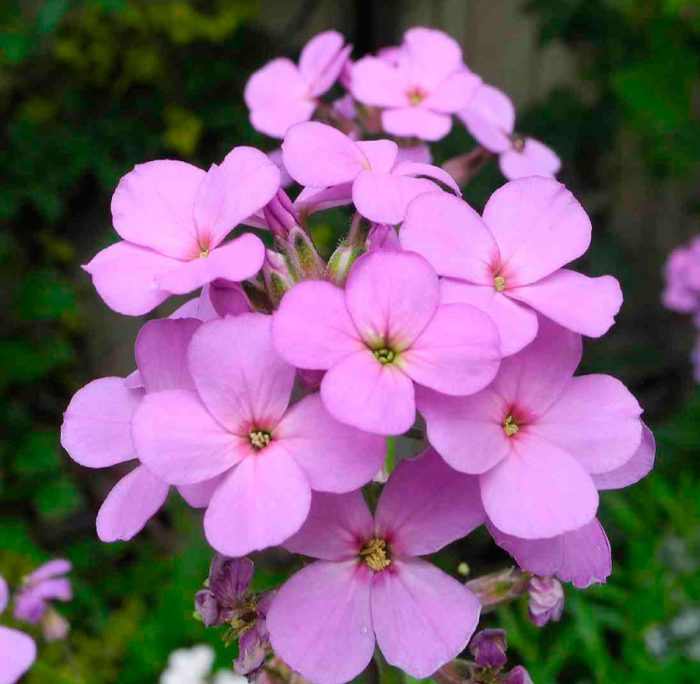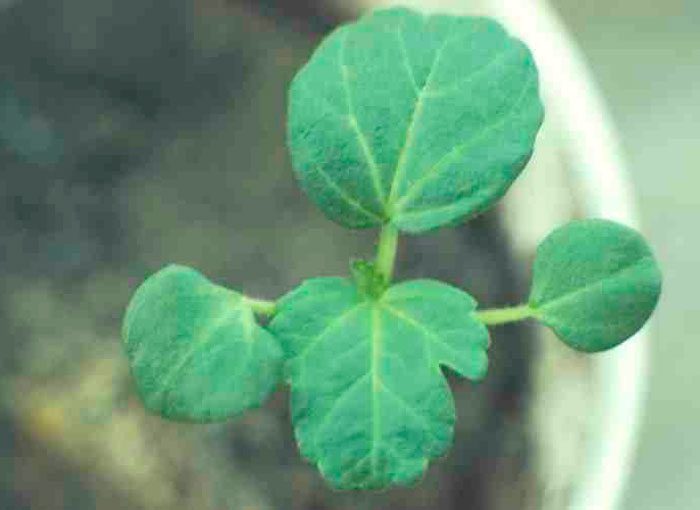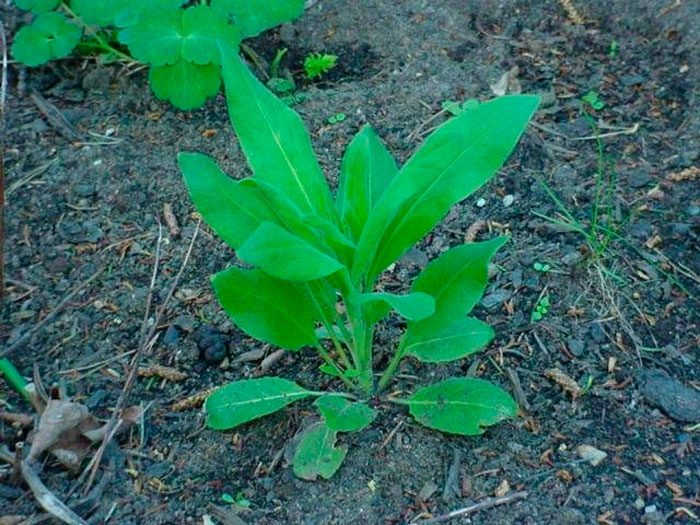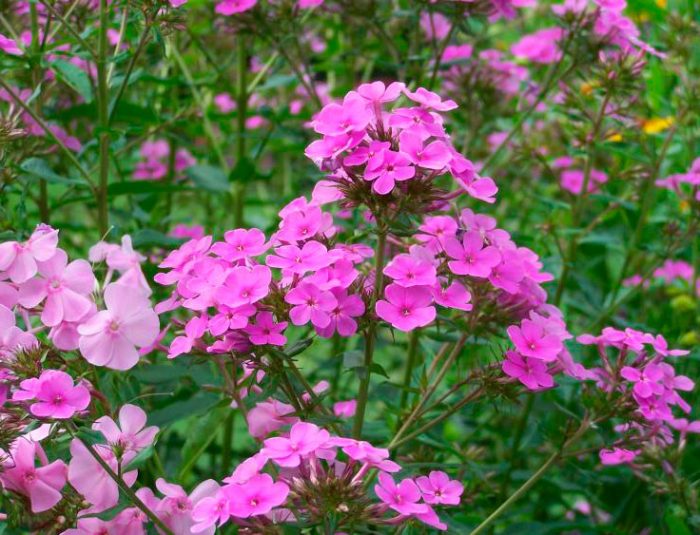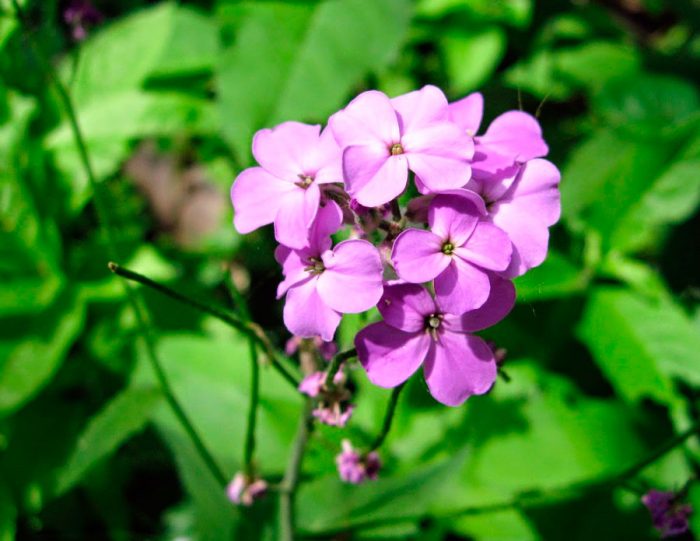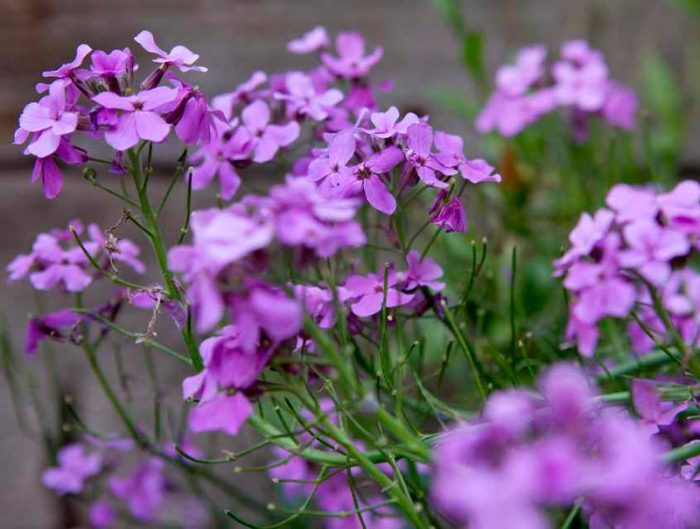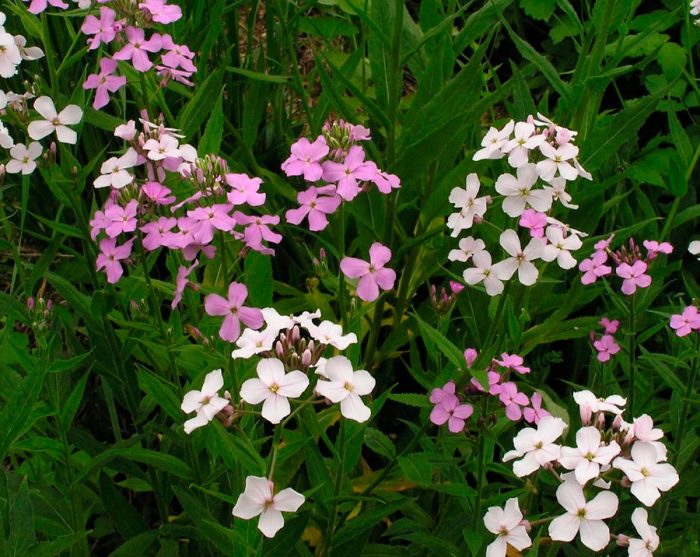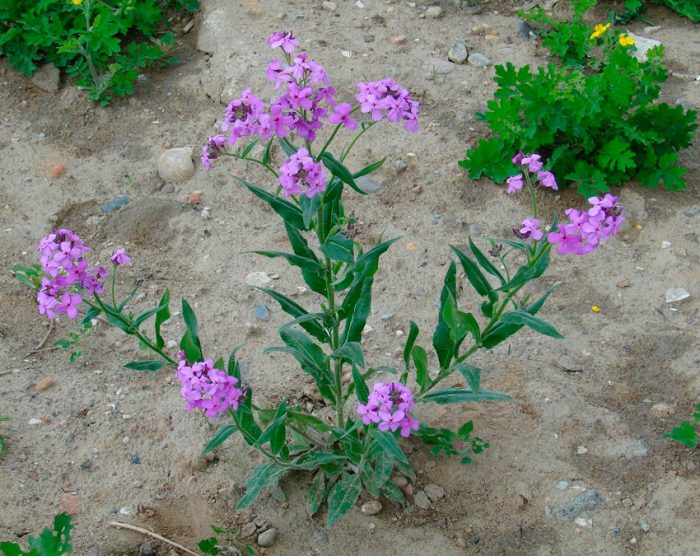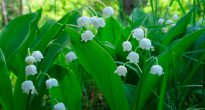A perennial or biennial herb nocturnal (Hesperis), also called a night violet, or hesperis, is a representative of the Cruciferous family (Cabbage). This genus unites more than 50 species, in nature they can be found in the territory of Central Asia, Central Europe and the eastern Mediterranean. The scientific name of such a plant comes from the Greek word translated as "evening" because after sunset the smell of nocturnal flowers becomes stronger. The most popular among gardeners is the type of nocturnal matrona: this perennial plant in open soil is cultivated as a biennial.
Content
Features of nocturnal
Vechernitsa has erect, branched shoots, the height of which can vary from 0.5 to 1.2 m. Alternately located whole sessile or petiolate leaf plates have a green color and a lyre-shaped or lanceolate shape, their edge is serrated. There is pubescence on the surface of the shoots and foliage. Loose racemose inflorescences consist of fragrant small flowers, which are double or simple, they are painted in pink, lilac, white or purple. The fruit is a cylindrical pod, linear or tetrahedral with barely distinguishable ribs. During the first season, the plant develops a dense rosette consisting of basal leaf plates, and the formation of the stem and inflorescences occurs the next year.
Growing nocturnal seeds from seeds
Sowing seeds for seedlings
Vespers are usually grown through seedlings. Seeds are sown in the first days of April. To begin with, in not too high containers, you need to pour a pre-disinfected seedling soil mixture, evenly distribute the seeds over its surface and fill them on top with a centimeter layer of peat combined with humus. Slightly tamp the surface of the crops, moisten them from the sprayer with well-settled water at room temperature. The container is covered from above with glass or film. Before the seedlings appear, as a rule, this happens after 17–20 days, the crops should be warm (about 20 degrees). During the mass germination of seeds, the film is removed from the container.
It is necessary to water the seedlings so that the substrate in the container is constantly slightly damp, and you also need to regularly gently loosen its surface.During the formation of the first true leaf plates in the bushes, they begin to harden, for this, the seedlings are taken out every day for half a month (the duration of the procedure should be increased gradually). When the bushes are hardened, they can be planted in open ground.
For planting such flowers, it is recommended to choose a sunny area, but a shaded place is also perfect for this, in any case, the nocturnal will bloom and grow equally well. The soil is suitable for moderately moist and loose, better if it is slightly alkaline or neutral. Before proceeding with planting, the site must be prepared. To do this, dig it up, while if the soil is poor, then mineral fertilizers and organic matter are introduced into it. During planting, a distance of 0.35 to 0.45 m is observed between the bushes. The planting hole should have such a depth that the plant's root system, taken together with a lump of earth, can fit in it. The planted seedlings need good watering.
Sowing in open ground
If you do not want to tinker with seedlings, then seeds of night violets can be sown directly into open soil. In this case, one should not rush to sowing, because the plants that have grown during the season will bloom only the next year. Sowing is recommended to be carried out in the last days of June or the first - in July, after the soil warms up very well. Seeds are sown not very densely and at a shallow depth. Do not forget to dig the site before this and add all the necessary fertilizers to it.
The first seedlings can be seen after about 20 days. When the season comes to an end, by this time the bushes will have to form rosettes, after which they are transplanted to a permanent place, while do not forget to leave a distance of 0.35 to 0.45 m between the flowers.If you wish, the transplant can be postponed until the next spring period. If you transplant the night violet correctly, then it will quickly take root in a new place. When flowering bushes are transplanted, they are taken along with a large earthen clod, which must be necessarily wet.
Caring for your garden party
Growing nocturnal in open soil is quite simple, like most other horticultural crops. Watering should be carried out regularly, while after it and after rain, it is sometimes necessary to loosen the soil surface. After the appearance of weeds, it must be removed immediately, and the bushes are systematically fed. In some cases, heavy inflorescences cause the stems to bend to the surface of the soil, making the bushes less attractive. In this case, you will need to install supports, to which the shoots are tied.
Experts advise cutting off the inflorescences immediately after they wither. This culture needs shelter only if a very frosty and little snow winter is expected. The plantings should be covered with non-woven material (lutrasil or spunbond). Spruce paws can also be used to cover the site.
How to water and feed
Watering such flowers is necessary on average 1 time in 7 days, for this they use warm water heated in the sun. During prolonged dry and sultry periods, the frequency of watering should be increased. At the same time, during prolonged rains, watering is suspended, since if the soil is excessively wet all the time, this significantly increases the likelihood that earthen fleas will harm the bushes, since they like to settle on crops belonging to the Cabbage family. It is necessary to water and loosen the soil surface only in the morning.
During the first season, the flowers are regularly fed with a solution of a complex mineral fertilizer, which contains a large amount of nitrogen. In the second year, during the period of bud formation, the plant should be fed with a liquid complex fertilizer for flowering plants or with phosphorus and potassium fertilizers.
Propagation of nocturnal
Species and varieties with simple flowers can be propagated by seed. But if terry night violets are cultivated, then they are propagated exclusively by dividing the bush, since if you independently collect seeds from the bushes and sow them, then the grown plants will have simple flowers. The division of bushes of terry varieties is carried out at the beginning of the spring period or in the autumn. To do this, the bush is carefully removed from the ground, divided into several parts, and the cuts are processed with crushed charcoal. Then the delenki are planted in pits, which are prepared in advance.
In late autumn, before the first frosts, the surface of the soil near the plants should be covered with a layer of mulch, which will save the root system from severe frosts in a winter with little snow.
Nocturnal pests and diseases
The night violet is affected by the same diseases and harmful insects as the rest of the cruciferous family. Such a flower can be harmed by cabbage aphids, cruciferous fleas and bugs, cauliflower stem moth, cabbage moth, caterpillars of turnip and cabbage whites and cabbage scoops, larvae of rape sawfly and cabbage fly and cruciferous gall midge. Insecticides are used to kill harmful insects; they can be bought at a specialized store. Experts advise to try to find a remedy that effectively destroys pests, while not harming the environment.
During the seedling period, seedlings can get sick with a black leg. An older plant sometimes infects keela, peronospora, alternaria, sclerotinia, phomosis, botrytis and fusarium, they are also fungal diseases. Also, the night violet can be affected by bacterial diseases such as black rot and vascular bacteriosis. For this culture, viral diseases such as mosaic and ring spot are very dangerous, since today they are considered incurable. In the fight against fungal diseases, fungicides show high efficiency, the choice of which in specialized stores is quite wide. However, those bushes that are affected by viral or bacterial diseases must be removed from the soil and destroyed as soon as possible. The area where the affected bushes were grown for three or four years will not be suitable for growing a single crop.
However, if you adhere to the rules of prevention and provide the plants with proper care, then they will be highly resistant to both harmful insects and diseases.
Types and varieties of nocturnal
Matron's party (Hesperis matronalis)
There are quite a few types of nocturnal, but only one is the most popular among gardeners - the nocturnal matrona (Нesperis matronalis), or the night violet. He comes from Asia Minor, the Mediterranean, Western Siberia and the Caucasus. Such a perennial plant is cultivated as a biennial. The height of erect shoots is about 0.8 m, in the upper part they are branched. Sharp oval-lanceolate leaf plates have a slightly toothed edge; they can be bare or pubescent with a white pile. Cylindrical racemose inflorescences consist of double or simple flowers, reaching about 20 mm in diameter, they can be white, pink, lilac or purple in color. The flowers begin to smell stronger in the evening and at night, and even in wet and cloudy weather. The most popular are the following varieties:
- nana candidissima - the height of the bush is about half a meter, the flowers are white and fragrant;
- purpurea plena - purple flowers are double.
Siberian evening party (Hesperis sibirica)
This Siberian endemic is becoming more and more popular every year. In nature, this kind can be found in Dauria, Sayan, in Altai, Lena, Irtysh and Yenisei. The height of such a biennial varies from 0.35 to 1.3 m. In the upper part, the stem forks, and on its surface there are glandular hairs.The upper leaf plates are narrow-lanceolate and sessile, and the lower ones are petiolate oval-lanceolate, acute with a serrated edge, and there is pubescence on their surface. Flowers of white or mauve color have pubescent pedicels.
Another cultivated species by gardeners is yellow nocturnal. However, it is usually grown as a medicinal plant.


Watch this video on YouTube

